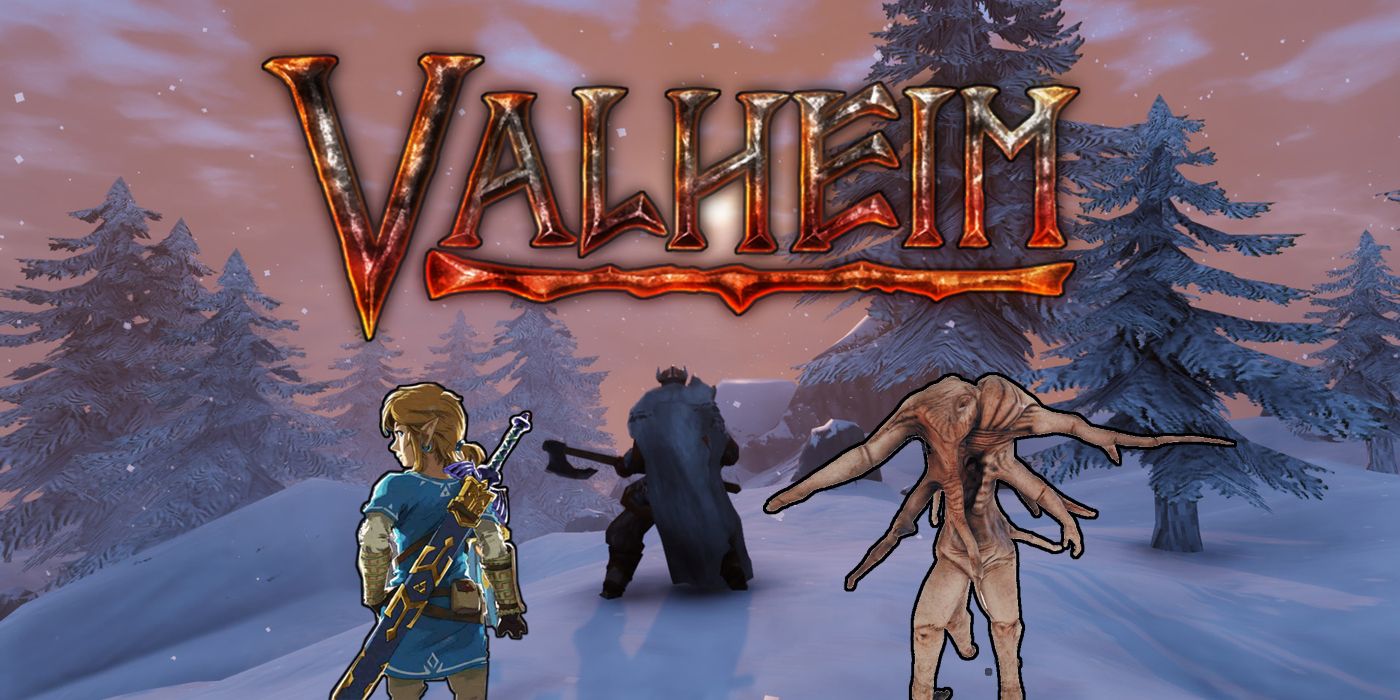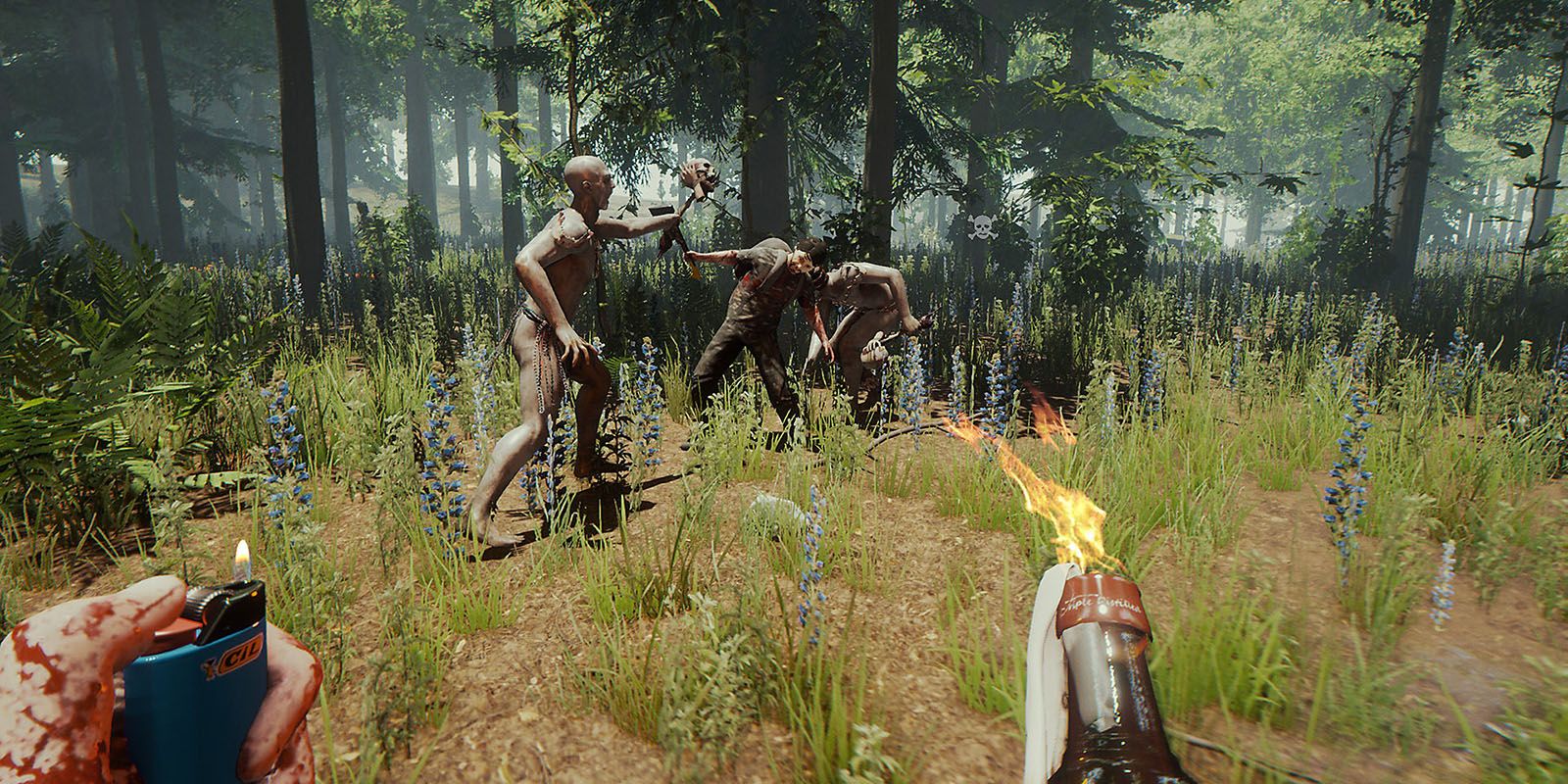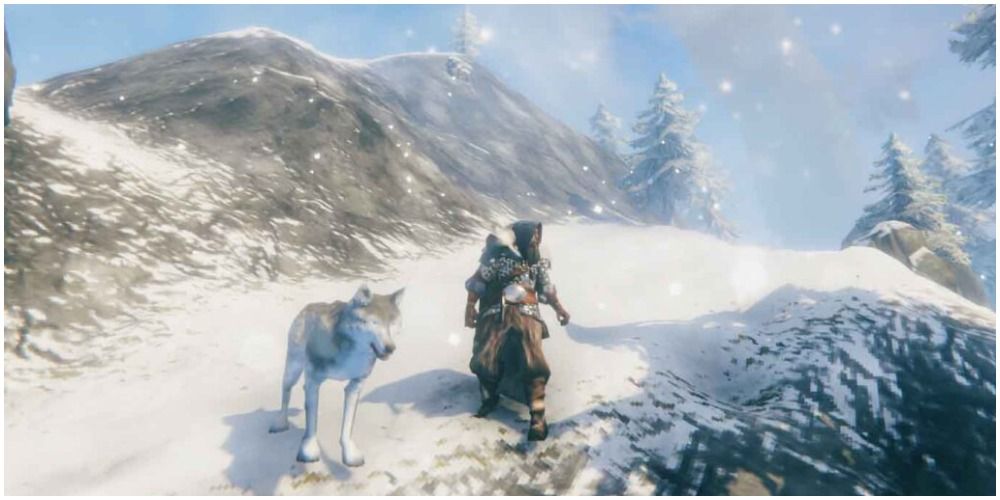Co-op Survival Game Valheim Borrows the Best from Breath of the Wild and The Forest

The co-op Viking survival game Valheim has become the big thing on Twitch, and for good reason: it's a well-put together game in a popular genre. Not only does it make wonderful use of the Viking setting and mythology, but it has a wonderful mix of mechanics that make it an always-engaging experience.
Some of these mechanics are similar to those in other games, only put together in a way that few (if any) games in the past have ever done. One of those games that Valheim borrows some ideas from is The Legend of Zelda: Breath of the Wild and the other is The Forest.

Breath of the Wild is a game that does not hold the players' hand at, really, any point. It lets the player discover things about the game, the mechanics, and the world at their own pace. There are so many different things in BoTW that just aren't explained to the player, but when the player figures out how to do something, it makes total sense. So many of these mechanics can get away with being unexplained because of the way that they seem realistic, at least in regards to the rules that the game sets.
Want to start a fire? Throw down a bundle of wood, flint, and hit it with a sword. Need a bridge across a gap? Cut down a tree at the right angle, and have it fall across. Sailing across the water on a raft just requires using a Korok leaf to propel the raft in the direction it needs to go. This is just the tip of the iceberg when it comes to these kinds of things in BoTW, but they're good showcases that make the world feel very real, allowing the player to do all kinds of things they've wanted to do in other games where it didn't work.
While there are tutorials in Valheim given by the Raven, they're typically very basic ones that simply describe the broad strokes of the game mechanics, but it's the little details that make Valheim a continuously engaging game. Cutting down trees, especially when in the middle of a forest, can occasionally be an actually dangerous experience. Trees falling on the player hurt, and when one tree falls into another tree, it might end up knocking that tree down, too. It might seem like a small thing, but these little things string together to make memorable experiences.
Fire and smoke is another thing that the game actually makes a player think about. Putting a campfire in any kind of enclosed space is probably going to go poorly because it's going to fill the room with smoke. This will end up suffocating the player if they aren't careful. Planning for ventilation anywhere there's a significant fire is something to actually think about, and that is definitely not the case in many other games.
These aren't specific examples of small mechanics that Valheim borrowed from BoTW, but it's evident that the way in which the developers decided to treat the open-world, and how the player interacts with it, is similar. It allows for a lot of creativity on the player's part, and that ensures that players are going to be finding cool new things they can do for a long time to come.

The Forest is another open-world survival game, but it's not a game simply about surviving. That can be what it's about if that's what the player chooses to do, but there's actually a story behind everything, too. The player has crash-landed into a forest full of what appear to be mutant cannibals, who seem to have killed and/or taken everybody else on the plane, including a child. The player can then track down clues about what's actually happening on the island, and what their involvement in everything is.
There's actually a lot to discover in The Forest, and it all seems to lead into the game's sequel, Sons of the Forest. Adding this kind of idea to a survival game changes the dynamic of it significantly for players that would like a story to follow, while not necessarily changing anything for players who are just looking to play the game and have a good time doing their own thing.
Valheim does something very similar. The player is a warrior that Odin orders the Valkyries to bring from Midgard to the 10th realm, Valheim. On Valheim, the player is tasked with killing Odin's rivals, which are the world bosses that the player can summon throughout the world when they're ready. These bosses are spread widely throughout the world, meaning the player has to embark on some serious journies in order to reach them.
Not only that, but the bosses, and the biomes that contain them, get progressively more difficult to deal with, ensuring the player has to upgrade their gear in order to survive the increasingly difficult conditions. Making the player summon the bosses was a decision that ensured the player still had control over the pace of the game. If the player isn't interested in this, they can simply not summon the monsters.

These aren't the only two games that Valheim borrows from, but it seems like two of the heaviest influences, idea-wise. Valheim blends all of this together beautifully with its Viking lore to create a kind of experience that's rare not only in the early access category, but rare to the survival game category in general. It simultaneously gives the player an enormous amount of agency over the game world, while at the same time, creating a game world that seems mysterious and dangerous. And though this game already has a ton of content and feels pretty polished, it's only in early access. There could be a lot more exciting stuff to come for Valheim; thus far, it appears to have a bright future.
Valheim is available now in Early Access on Steam.

Post a Comment